Sceneries
(Landscapes in Repose)
Tripartite closed-circuit video-installation
The Time of the Illusion
On the video staging “Sceneries (Landscapes in Repose)” by Alexander Steig
“One day in August,” Kobo Abe’s novel The Woman in the Dunes begins, “a man disappeared.” His fate will be consummated in a nameless desert, in a sand trap that absorbs all hope of salvation. One does not need to know the course of the story to guess that the constellation develops into a parable of human existence: man – woman – desert. The archaic landscape becomes a mystic space, enigmatic and ambivalent. It is a prison and an area of freedom, a dwelling and a threat, the projection space of inner mental states. In the opening sequence of Hiroshi Teshigahara’s congenial film adaptation Suna no Onna [The Woman in the Dunes] from 1964 for which Kobo Abe wrote the screenplay, the director depicts the monumentality of a dune following close upon a mysterious detailed image of a single grain of sand as if he simultaneously saw an all-encompassing metaphor in the tension field of the particle and the whole, the individual and the universe with microstructure and macrostructure.
These are the familiar interpretative models which immediately identify Alexander Steig’s video staging Sceneries in the Foro Artistico at Hannover as codes of the elemental: two magnificent, large-format video projections show desert landscapes—one of them radiant yellow against a azure blue sky, the other under a nocturnal panoply of stars. Both are uninhabited. Their brilliant colors soften the impression of an adamant nature and create an aura of promise. Steig’s Sceneries are above all places of desire, exotic landscapes like those from Thousand and One Nights. The exactly placed horizons mark the threshold between here and there, a motif that was already a favorite among Romantic painters because it gave two directions to the sentiment: homesickness and wanderlust. The horizon simultaneously functions as a compositional element. It divides the pictures into clear color fields, translating them into an abstract composition and refreshingly counteracts the Romantic gesture. The synthesis of realism and abstraction keeps the painterly tableaux in balance.
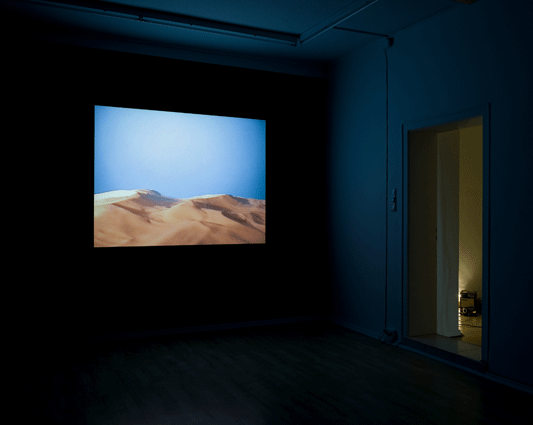
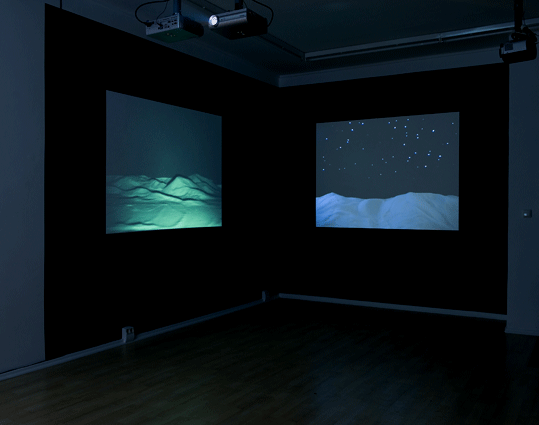
Sceneries (1,3 + 2), 2008, Gallery k4, Munich (Photographs: E. Hassos)
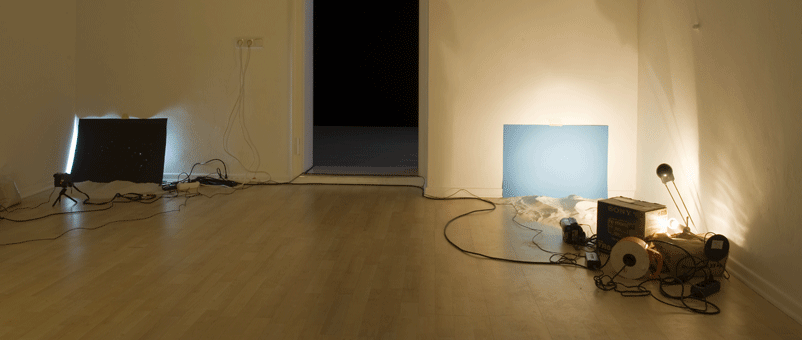
Sceneries (1 + 2, set), 2008, Gallery k4, Munich (Photo: E. Hassos)
In his 2008 exhibition at the Munich Galerie k4, Steig presented the Sceneries as a three-part installation with a further nocturnal desert landscape. It is immersed in a greenish light, suggesting the view through a night vision device as used by the military. And it also brings the disaster scenes to mind that flicker every evening on the television screens in our living rooms at home or on the Internet: war in the Middle East, the battle over oil. This chain of associations also retroactively alters the perspective of the magical panoramas; if they had just told of a myth-enshrouded orient, they now recall blazing heat, climate change and global warming instead. The medial stream of images—they suddenly become retrievable in front of Steig’s iconographical video projections.
But nothing prepares the viewer for the surprising discovery that these complex works charged with art historical and political connotations are in fact closed-circuit installations. The monumental backdrops are revealed to be measly piles of sand, the blue ether, the starry sky turn out to be a colored cardboard sign which Steig placed in a corner of the exhibition space (or inconspicuously in an adjoining room) and painstakingly illuminated. Video cameras film the sceneries; the images they take are projected directly onto the walls or shown on monitors. Reality and its representation, the trivial and its exaltation exist simultaneously.
Closed-circuit installations have conquered everyday life since the mid nineteen seventies with surveillance camera in banks, department stores, subways and most recently also bars and restaurants whose intimate atmospheres suggests privacy, but does not exclude security checks. The specter of total observation haunts. Alexander Steig’s low-budget installations in an aggressively armed hi-tech age can as such also be read as a laconic commentary on the absurdity of large-scale data storage. This skepticism is directed at an excessive pictorial archive that inevitably eludes accessibility because we cannot be absolutely certain about the interpretation of the information it stores. The Sceneries ultimately initiate a critical reflection on authenticity, on the dubiousness of illustrations and the power of the imagination.
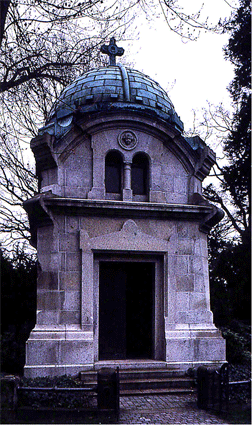
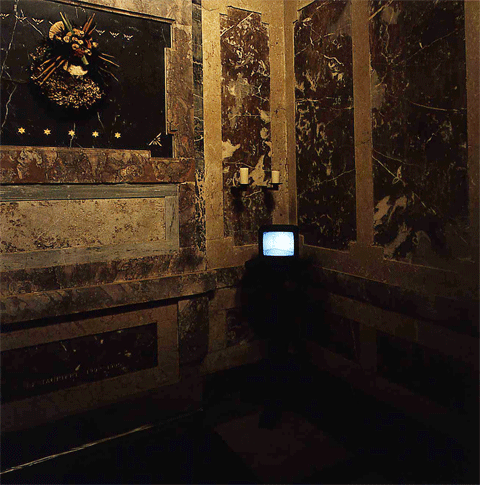
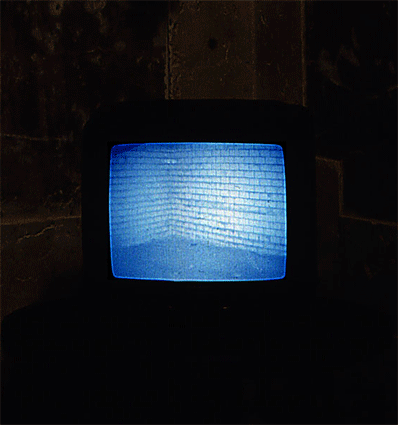
Über-Wachen, 1999, Engesohde Cemetery, Hannover (Photographs: R. Zakowski)
Steig’s artistic interest has always been ignited by the problematic of a control system that draws its most stimulating moments from the dialectic of expectation and disappointment. In 1999, for his work Über-Wachen he installed a video camera in an empty burial chamber on Engesohde Cemetery in Hannover and conveyed the static image to a monitor as if the miracle of resurrection could be considered a possibility here and spiritual experience captured on film. Latent doubt in the calculability of reality and the reliability of its basic rules infiltrates every situation that Steig occupies with his camera—regardless whether it deals with the elevators in the Lower Saxon Ministry for Science and Culture, the administrative tract of the Dominican Monastery in Frankfurt or the basement of the exhibition space Foro Artistico. Unspectacular daily life accrues a poetic potential for the very reason that it is impossible for the problematic of appearance and reality to be exhaustively explained.
Nam June Paik’s legendary 1973 closed circuit installation TV Buddha already posed the philosophical question regarding the character of reality as well as one’s own identity with the means of video technology. A precious statue of the Buddha sits opposite a television set and, like in a mirror, “watches” his own image on it that is simultaneously being filmed by a camera. As an uninterrupted static live image, it is the ideal focus of meditation because it—moved and unmoved—envisions the trickling of time and eternity at the same time. The properties of Alexander Steig’s Sceneries are very similar. Their deserts embody the dissolution of all duality, the experience of the entity of the grain of sand and the dune. Kobo Abe’s fictional hero knows that “sand never rests.” “While pondering the effects of the flowing sand he was occasionally also carried away by the illusion that he himself was integrated into this flow.”
Kristina Tieke, Hannover
Translation by Dr. Michael Wolfson, catalogue "Sceneries (Landscapes in Repose)", Foro Artsitico, International Media-Art Forum, Hannover, 2009
![]() .........
.........
![]() .........alexandersteig.com
.........alexandersteig.com
© Alexander
Steig, Authors and VG Bild-Kunst, Bonn, 2008/2012